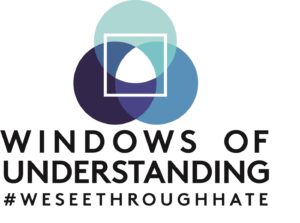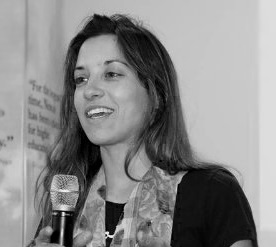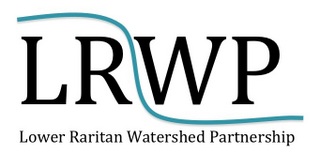In February 2021, the LRWP will join the New Brunswick Community Arts Council and others for “Windows of Understanding,” in which local non-profits partner with artists to transform main street spaces into “windows of understanding” art installments. Through these art installations the community can learn about social justice issues that don’t make daily headlines.
For 2021 the LRWP is thrilled to partner with Highland Park resident Marcia Shiffman. This year Marcia will help us communicate the “hidden” social justice issue of inequitable access to nature.
Please join us for a Webex listening session on Thursday October 15 from 5:30-6:30 pm to share your concerns, observations, and thoughts related to social justice and access to nature. Your participation will help us better understand the issues, and will help us in the work of communicating these issues through art.
This listening session is free, however pre-registration is required. You will receive a Webex registration link before the event start.
While the COVID-19 quarantine has encouraged people to get a healthy dose of the out-of-doors to breathe fresh air, strengthen immune systems, exercise, and destress, we know that accessing clean, safe, green and blue spaces is much harder for our low socio economic status urban communities. Residents from these communities often don’t have transportation or resources for a visit the Jersey shore or a hike in our state or national parks.
This social justice issue motivates the work of the LRWP in monitoring pathogens at non-swimming public access beaches along the Lower Raritan. We have chosen sites where our State and County Public Health Departments do not monitor water conditions, yet where our most vulnerable residents regularly fish, swim, and otherwise recreate in the water.
We will start the listening session with a brief overview of equitable access concerns in the Lower Raritan, including data from our Summer 2020 pathogens monitoring work.
Want to learn more about Social Justice and Access to Nature? The Children & Nature Network developed a brief literature review on “Equitable Access to Nature’s Benefits“.

BECAUSE OF FREEZING TEMPERATURES THIS EVENT HAS BEEN CANCELLED
Join the LRWP and Kim’s Bike Shop as we plant trees and pollinator plants – seeds of hope – in honor of Martin Luther King Day and the kick-off to Windows of Understanding 2019.
Participants will be able to take their seedlings home with them.
The event will include a chance to meet sculpture artist
Olga Mercedes Bautista, who has partnered with the LRWP to create sculptures of trees made from plastic found at stream clean-ups and other events.
Location: Kim’s Bike Shop / 111 French St, New Brunswick, NJ 08901
Time: Monday January 21, 10-11:30 AM
Windows of Understanding is presented in collaboration by the New Brunswick Community Arts Council, Mason Gross School of the Arts, and the Highland Park Arts Commission. Leadership support of the second annual Windows of Understanding Project is provided by a Community-University Research Partnership Grant for New Brunswick awarded by the Vice Chancellor for Research & Innovation at Rutgers University.
Interview conducted by LRWP Raritan Scholars intern Quentin Zorn

Why did you decide to work with the LRWP?
In the past couple of years my work has been in community gardening, locally organized composting and food system development. I have focused my creative drives toward innovating and troubleshooting in these sectors via grassroots organizing and business startups.
The opportunity with coLAB and LRWP came along at the perfect time. I had just finished installing a geodesic greenhouse in an exhibition called LANDHOLDINGS at Index Art Center in Newark, NJ and was looking to invest more energy to art-making. Additionally LRWP’s mission incorporates scientific and geological considerations that at the time I was not familiar with: the focus on watershed heath and its intersection with the urban environment. I was eager to learn more.

Processed with VSCO with g3 preset
How do you relate to the LRWP’s goals?
LRWP’s goals are to inspire environmental appreciation and stewardship, to inform relevant stakeholders on the watershed by building networks for sharing data about its health, and to innovate to improve watershed health responsibly with a diverse group of partners.
My role as a Resident Artist with the LRWP is to support their on-going projects and help generate new projects that align with these goals. Because my personal viewpoints also align with LRWP’s mission, my own integrity as an artist is not compromised. In fact, exposure to their programs and operations has been challenging and enlightening. The public needs organizations like LRWP to bring together science and community towards making impactful environmental efforts. Art plays a big role in this as it can help folks make the connection between the health of local environmental resources and one’s personal well-being in exciting and thought-provoking ways.
How does integrating art with science change the way you think about your own art?
Even the most traditional art forms require scientific understanding. For example, oil paint is an exceptionally difficult medium that if applied improperly can result in cracking and flaking once it sets. Research- historical, social, and technical- is always necessary for an artist and in-studio discoveries can be, in many ways, scientific in nature. I am used to shifting my medium to convey different kinds of ideas. As an interdisciplinary artist I am excited to collaborate and learn more technical languages.
How does the interpretive nature of art help or hinder conveying the messages you want people to understand?
This tension is one of my favorite parts of art making. The artist Patricia Piccinini is a huge inspiration of mine as much of her work is about the “creator’s” inability to control their “creation.” Experienced artists are able to walk the tight rope between intention and perception, directing the viewer but leaving enough space in the work open for the viewer to be able to identify and enter into it. Of course, not all art works intentionally speak to all audiences.
How do the sculptures from project WADES help achieve the LRWP’s goals or environmental goals in general?
Project WADES stands for Watershed, Action, Dialogue, Education and Stewardship and aims to develop Environmental Education curriculum. The sculptures are positioned at the intersection of WADES with a public sculpture project under a program called Rail Arts River, which aims to connect New Brunswick communities to the Raritan though art and green infrastructure. The sculptures from Project WADES are casts of the hands of youth clasping pieces of trash collected at clean ups along the streams of the Raritan Watershed. They serve to inspire increased connection between human behavior and watershed health within LRWP’s watershed curriculum.

When the sculptures are completed, what is the reaction you are hoping for?
To be honest I haven’t reflected on the reaction as much as the intention and the varying methods that coLAB, LRWP, and I have discussed for presentation! So far this work is still going through a collaborative gestation process. The sculptures will be brought back to the schools for semi-permanent art installations but will also be used in a larger public sculpture at Boyd Park. When the work is complete I am very much looking forward to seeing what people think.
How did you create the River Walk book and what do you hope people take away from it?
River Walk is a kind of functional art work, much more sentimental and straightforward then my typical work. It is a usable notebook made primarily from recycled materials: reused paper, cardboard, old art prints and wood binding. The wood binding was fabricated from materials gathered from a FEMA buy-out home that was deconstructed and transformed into a rain garden and flood storage park, an exciting project done by landscape architect and Rutgers Professor Tobiah Horton. The signature sheets include linocut prints of humans in nature. These images were taken directly from a hike with coLAB Arts on the D&R canal in New Brunswick. The only way to acquire this work is by donating to LRWP. My hope is simply that people enjoy it and use it!

What effect do you think the Windows of Understanding project has on the community or the local environment?
Windows of Understanding is a public art project set in multiple storefront businesses. It operates like a rhizome, utilizing the brain power of local advocates and artists to filter their mission and work through a prompt. This year that prompt is ”We See Through Hate.” I see so much mutual benefit here and I’m excited about the realistic, but hopeful message. Our country is going through rapid change that seems to hark on hard times for so many of us. Americans are under incredible pressure from the media, from the antagonistic government, from the precarious state of healthcare, and from a job market threated by automation. To be truly resilient, in an environment filled with risk, disparate communities should be given opportunities to know each other face to face; to move past bigotry and ignorance and to see through hate. Windows of Understanding will address these struggles, but provide hope and positivity to the surrounding public. I believe this effort will have a positive effect on the passerby, increase the visibility of advocate organizations, and increase community cohesion.

Healthy soil is important to stormwater management, and “Healthy Soils” is the research and action theme for the Lower Raritan Watershed Partnership in 2018. The LRWP has planned multiple soil-focused talks, tours and events throughout the year, with a kick-off seed give-away at Kim’s Bike Shop (111 French Street, New Brunswick, NJ) on Monday January 15 (Martin Luther King Day). This is organized in conjunction with unveiling of the “Listen to your Neighbor, Listen to the Land” art installation developed by the LRWP and COLAB ARTS Wonderful Resident Artist Jamie Bruno. Jamie’s work is part of New Brunswick’s “Windows of Understanding” project.
The Lower Raritan Watershed Partnership and Kim’s Bike Shop invite you to join us from 2-4 PM on Monday January 15, 2018 for the unveiling of Jamie Bruno’s “Listen to your neighbor, listen to the land” and for refreshments. This is part of the City of New Brunswick’s “Windows of Understanding” project. We will be outside in front of the store planting milkweed for participants to take home, and handing out seed packets for summer gardens.
COLAB ARTS Executive Director Daniel Swern will lead a tour of the “Windows of Understanding” storefront windows leaving from Kim’s at 2:30 pm.
Background: The LRWP and COLAB ARTS National Endowment for the Arts resident artist Jamie Bruno developed “Listen to your neighbor, listen to the land” – an installation at Kim’s on display from January 15-February 28. “Listen to your neighbor, listen to the land” reflects the way the LRWP hopes to connect to our communities. The installation incorporates shoes filled with soil and plants. The shoes represent people, travel, and change. The soil represents our origins in the land.
In November the New Brunswick Community Arts Council invited the Lower Raritan Watershed Partnership to participate in the inaugural “Windows of Understanding: We see through Hate” project. Windows of Understanding seeks to:
• Counteract the negativity and hate perpetuated in the headlines – by installing community art interventions that illustrate the compassion and love being exercised around us.
• Promote awareness about the vast array of social justice issues being addressed in New
Brunswick, connecting organizations with the wider community and each-other.
• Transform our “Main Street” spaces into literal windows of understanding.

The LRWP was paired with Kim’s Bike Shop (111 French St, New Brunswick, NJ 08901). Working with Kim’s and our coLAB Arts National Endowment for the Arts resident artist Jamie Bruno, the LRWP has developed “Listen to your neighbor, listen to the land” – which will be installed at Kim’s from January 15-February 28. “Listen to your neighbor, listen to the land” reflects the way the LRWP sees through hate as well as the way we hope to connect to our communities. The installation incorporates shoes filled with soil and plants. The shoes represent people, travel, and change. The soil represents our origins in the land.
From Jamie Bruno’s artist statement:
Across religion, race and culture we all spring from the earth and its water and soil. The plants give hope for survival and sustenance: hope to grow new roots and make new connections. The title asks the viewer to listen to their neighbors over the din of every day life. Our neighbors are people who live near us. People who live on the land we live on, yet whose stories we often do not know. In urban environments it can be difficult to know land too, yet she is everywhere: Under the pavement, in the water we drink, in the air we breathe.
 • The shoes represent the human element, the “neighbor” through travel, labor and economic change in addition to empathetic connection across class, race and culture; an admonition to “walk in another’s shoes.”
• The shoes represent the human element, the “neighbor” through travel, labor and economic change in addition to empathetic connection across class, race and culture; an admonition to “walk in another’s shoes.”
• The soil represents land: absorption, filtration, and contamination. Soil health effects human health though the quality of our fruits and vegetables as their roots gather nutrients and the quality of the water in our watersheds as water either filters slowly through healthy soil becoming clean or flows quickly above compacted soil carrying waste.
• The plants represent the hope to grow new roots in new places and to make new connections. Plants store and slow water as it moves through the landscape, further cleaning it, thereby increasing the landscapes inherent value to local wildlife and to neighbors, whether they pass through or decide to stick around and plant their own seeds.
The LRWP and Kim’s invite you to join us from 2-4 PM on Monday January 15, 2018 for the “unveiling” of “Listen to your neighbor, listen to the land” and for refreshments. We will be outside in front of the store planting milkweed for participants to take home, and handing out seed packets for summer gardens.
For more information contact Jamie Bruno: jamie@colab-arts.org









